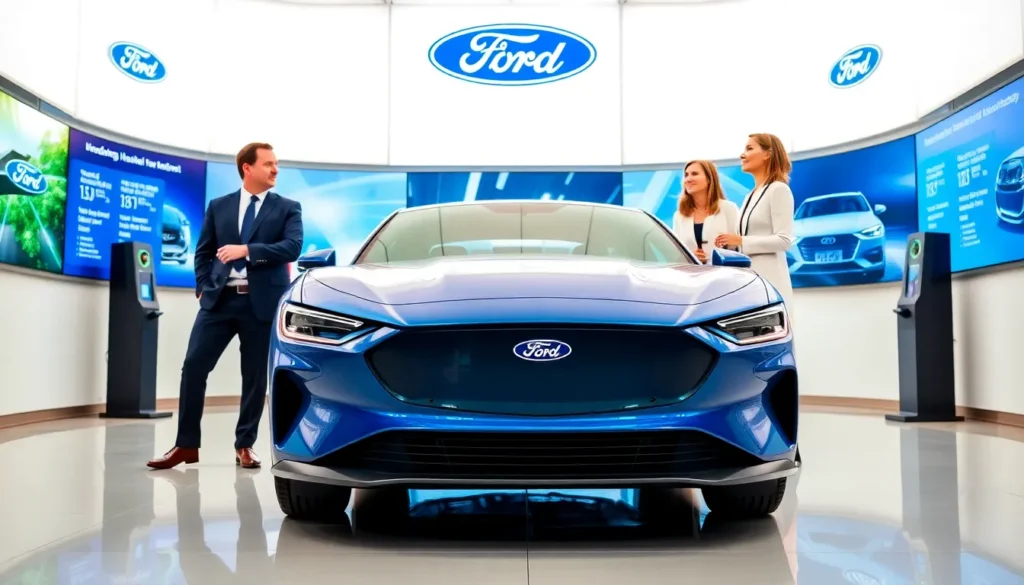Table of Contents
ToggleIn a world where smartphones have become an extension of our hands, mobile e-commerce is no longer just a trend; it’s the new shopping frontier. Picture this: you’re lounging on the couch, scrolling through your favorite app, and with a few taps, you’ve just snagged the latest gadget without even changing out of your pajamas. Who knew shopping could be this cozy?
Overview of Mobile E-Commerce Trends
Mobile e-commerce continues to gain momentum, driven by several key trends. Increased smartphone usage contributes significantly to this growth, with over 50% of all online purchases made via mobile devices in 2023. User-friendly interfaces enhance the shopping experience, allowing consumers to navigate and complete transactions effortlessly.
Social media platforms play a crucial role in shaping mobile shopping behavior. These platforms not only promote products but also enable direct purchasing options, appealing to modern consumers’ desire for convenience. According to a recent study, 72% of users who discover products on social media make a purchase.
Mobile wallets and payment solutions facilitate seamless transactions. Services like Apple Pay and Google Pay have gained popularity, boosting mobile sales by 30% from the previous year. Enhanced security features in mobile payment options also build consumer trust, leading more shoppers to complete purchases on their devices.
Personalization of the shopping experience stands out as another significant trend. Retailers use data analytics to tailor recommendations based on user behavior, enabling targeted marketing efforts. As a result, conversion rates increase, with personalized experiences seeing up to 20% higher sales.
Live shopping events are also emerging in the mobile e-commerce landscape. Brands use real-time streaming to showcase products, allowing customers to interact and purchase in an engaging format. This approach captures the interest of younger demographics, further driving mobile e-commerce growth.
These trends indicate a robust shift towards mobile e-commerce and underscore its influence in the retail sector. As technology continues to evolve, mobile e-commerce will remain an essential component of consumers’ shopping experiences.
Impact of Mobile Technology on E-Commerce
Mobile technology significantly influences e-commerce, reshaping shopping behaviors and enhancing consumer experiences. As mobile capabilities evolve, businesses adapt to meet rising customer expectations.
Emergence of Mobile Payment Solutions
Mobile payment solutions gained momentum, facilitating faster and more secure transactions. In 2023, adoption rates soared, with a marked 30% increase in mobile sales attributed to platforms like Apple Pay and Google Pay. Control over payment security builds consumer trust, encouraging more users to embrace mobile transactions. Businesses adopting these solutions witness improved sales efficiency and customer satisfaction.
Rise of Mobile Shopping Apps
Mobile shopping apps emerged as essential tools for consumers, streamlining the purchasing process. User-friendly designs lead to higher engagement, with over 50% of online purchases made through these applications in 2023. Personalization within apps drives conversion rates up to 20% higher, significantly enhancing user experiences. Brands leveraging push notifications and targeted promotions effectively capture customer attention and drive repeat purchases.
Consumer Behavior in Mobile E-Commerce
Mobile e-commerce is significantly shaping consumer behavior. Shoppers increasingly prefer the convenience of purchasing from their smartphones.
Preference for Seamless User Experience
Mobile users prioritize seamless experiences. User-friendly interfaces contribute to higher satisfaction levels. Almost 50% of shoppers abandon a cart if the checkout process is complicated. Simplified navigation leads to increased engagement, enhancing overall sales. With mobile apps, brands enhance user experiences through fast loading times and intuitive designs. Streamlined processes encourage repeat purchases, optimizing customer loyalty. Ease of use remains key in retaining mobile shoppers.
Influence of Social Media on Purchases
Social media heavily influences consumer spending. Approximately 72% of users who discover products on these platforms make purchases. Brands leverage platforms to showcase products, connecting with potential customers. Engaging content, like videos and influencer collaborations, drives interest and conversions. Effective advertising through social channels allows brands to reach targeted audiences more efficiently than traditional channels. As younger demographics increasingly shop through social media, businesses adapt their strategies to capitalize on this trend. Social platforms not only facilitate discovery but also foster community and brand loyalty among users.
Future Predictions for Mobile E-Commerce Trends
Mobile e-commerce is poised for continuous evolution, driven by emerging technologies and shifting consumer preferences.
Integration of Augmented Reality
Augmented reality (AR) is expected to revolutionize online shopping experiences. By 2024, analysts predict that AR will be adopted by over 70% of mobile retailers, enhancing product visualization. Shoppers benefit from trying products virtually before purchase, increasing confidence in their buying decisions. Brands integrating AR features can expect higher engagement rates, with 61% of consumers preferring retailers who offer these experiences. Furthermore, AR can reduce return rates by providing a clearer understanding of products, aligning with the growing demand for convenience and accuracy in mobile shopping.
Growth of Voice-Activated Shopping
Voice-activated shopping continues to gain traction as smart speakers become more prevalent. By 2025, forecasts indicate that over 50% of households will utilize voice assistants for purchases. Consumers appreciate the hands-free convenience that voice shopping offers, making it particularly appealing for quick and impulsive buys. Personalization through voice tech allows brands to tailor recommendations, leading to a more engaging shopping experience. As voice recognition technology advances, the accuracy and reliability of voice transactions will enhance user trust, driving further adoption in the mobile e-commerce landscape.
The landscape of mobile e-commerce is rapidly evolving and reshaping how consumers interact with brands. As technology advances and preferences shift, businesses must stay ahead of the curve to meet the demands of mobile-savvy shoppers.
With the rise of personalized experiences and innovative payment solutions, the future looks promising for mobile commerce. Engaging content and real-time interactions will continue to play pivotal roles in capturing consumer attention.
As brands adapt to these trends, they’ll not only enhance customer loyalty but also drive significant growth in sales. Embracing these changes is essential for any business aiming to thrive in the competitive mobile e-commerce arena.




